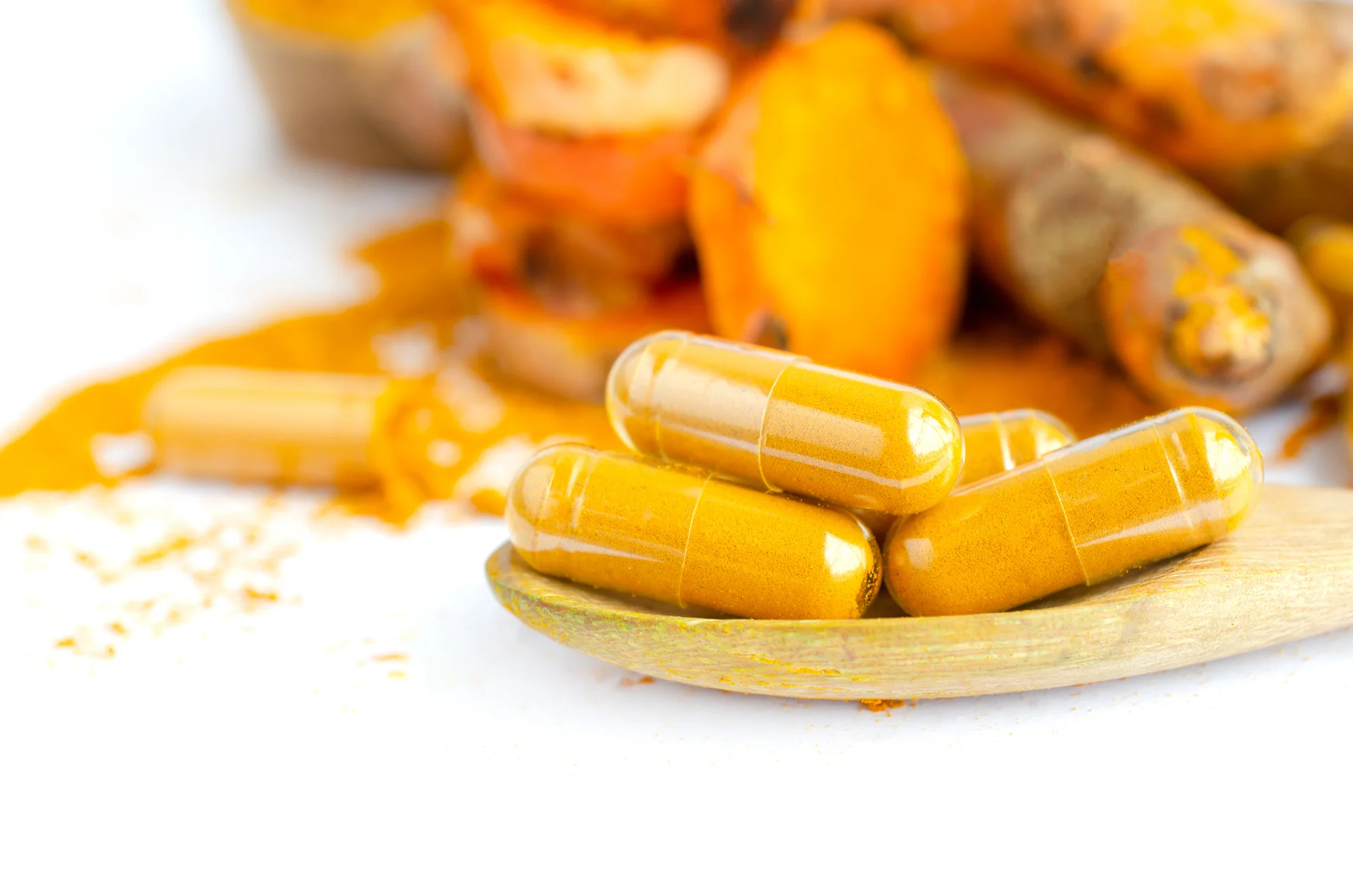How Do They Relate to Your Health?
Turmeric has garnered significant interest in recent years due to its compound curcumin and its wide-ranging health benefits. Curcumin, the primary curcuminoid in turmeric, is a potent anti-inflammatory and antioxidant.
However, turmeric also contains histamines, which can considerably impact health depending on levels and individual enzyme activity.
Exploring the Relationship Between Turmeric and DAO Enzyme
The diamine oxidase (DAO) enzyme plays a critical role in oxidizing excess histamines in the body to prevent an imbalance. Histamine intolerance and insufficiency of the DAO enzyme are thought to contribute to conditions such as allergies, dermatitis, and irritable bowel syndrome.
Therefore, while turmeric and its curcumin have been renowned for their medicinal properties, the root also contains histamines that may provoke adverse reactions in some, especially those with impaired DAO activity.
Turmeric itself appears to have a bidirectional effect, as it both boosts and reduces DAO levels to some degree.
This article aims to provide an overview of the complex and intertwined relationships between turmeric, its compounds, the DAO enzyme, histamines, and health implications.
By understanding how these components interact, we can make more informed decisions about integrating this gold-colored spice into the diet.
Turmeric: A Powerful Anti-inflammatory and Antioxidant
As we discussed, turmeric owes its bright yellow color and medicinal qualities to curcumin, a polyphenolic curcuminoid.
Curcumin as the Active Compound in Turmeric
Curcumin is considered turmeric’s active compound and primary antioxidant and anti-inflammatory agent.
Anti-inflammatory Effects of Curcumin
Curcumin has been found to possess several antioxidant benefits. It helps neutralize free radicals that can damage cells and contribute to aging and disease.
Curcumin may help boost antioxidant enzymes in the body, protecting against oxidative stress. Some research also shows that curcumin can chelate metal ions involved in free radical production.
Potential Benefits for Allergies and Immune Response
The anti-inflammatory effects of curcumin are perhaps its most extensively studied properties. Curcumin inhibits the production of certain prostaglandins and leukotrienes, reducing inflammation.
It also inhibits the activity of cyclooxygenase-2 (COX-2) and lipoxygenase enzymes. By suppressing the production of inflammatory compounds and enzymes, curcumin helps relieve inflamed tissues and provides relief from inflammatory pain.
Curcumin’s antioxidant and anti-inflammatory capabilities may translate to benefits for allergy sufferers and the immune system. Some research suggests that curcumin could help modulate the immune response and reduce symptoms of seasonal allergies like rhinitis.
However, more research is needed to explore these possibilities.
The curcumin in turmeric owes its medicinal power to its ability to neutralize free radicals, reduce inflammation, and possibly help regulate the immune system. When combined, these properties have the potential to positively impact allergy, autoimmune, and general health and wellness.
DAO Enzyme: Role in Histamine Breakdown
The diamine oxidase (DAO) enzyme plays a critical role in regulating histamine levels in the body. Histamine is an organic compound produced by the breakdown of the amino acid histidine.
Some histamine is essential for normal functioning, but excess amounts can lead to inflammation and allergic symptoms.
Definition and Function of Diamine Oxidase (DAO)
DAO helps prevent histamine overloads by oxidizing excess histamine to produce harmless metabolites called imidazole acetaldehyde and ammonia, which are excreted in urine. DAO is found in the small intestine, kidneys, lungs, and serum. Reduced DAO activity can result in improper breakdown of dietary histamines, elevated blood histamine levels, and histamine intolerance symptoms.
Histamine Metabolism and the Role of Histamine N-methyltransferase
Another enzyme, histamine N-methyltransferase, also metabolizes histamines but to a lesser degree. Together, these enzymes help ensure histamine levels remain in a healthy range. When too little histamine is broken down, excess accumulates and activates histamine receptors.
Histamines bind to four receptor subtypes: H1, H2, H3, and H4. The H1 receptor is associated most with allergy symptoms like rashes and itching. Stimulation of H2 receptors mediates digestion and cardiovascular function. H3 receptors are located on neurons and key for regulating histamine synthesis and release. H4 receptors are involved in inflammation and immunity.
How Histamine Intolerance Is Produced From Histidine
Histamine intolerance results from an imbalance in histamine production or impaired breakdown by DAO and other enzymes. Symptoms include rashes, itching, digestive issues, inflammation, headache, dizziness, and fatigue.
An elimination diet and supplementing with betaine HCL and enzymes may help, while allergy medicines can provide relief from severe symptoms.
Correct diagnosis of histamine intolerance depends on blood tests to determine DAO and methyltransferase activity as well as histamine levels. Urine histamine tests may also indicate excess histamine production or impaired breakdown.
Symptoms of Histamine Intolerance and Diagnosis
DAO and histamine enzymes play critical roles in regulating histamine for good health. An imbalance or deficiency in these enzymes can lead to histamine intolerance and a host of unpleasant symptoms.
By understanding how histamines work in the body, we can better determine if reducing turmeric or supplementing for histamine support may help relieve adverse allergic reactions.
Histamine Intolerance: Causes and Management

Several factors can lead to release of histamine and histamine intolerance. An overgrowth of unhealthy bacteria in the gut is thought to contribute to increased histamine synthesis.
Inflammatory foods like packaged foods, red meat, dairy, and gluten also promote histamine production. Exposure to heavy metals such as mercury may activate mast cells to release histamine.
Factors Contributing To Excess Histamine
We can view histamine levels in the body as having a theoretical “bucket.” Once too much histamine accumulates and overflows the bucket, symptoms emerge.
Maintaining adequate breakdown of histamines through enzymes and support for a healthy gut lining is key to keeping your histamine bucket at a manageable level.
Methods for Managing Excess Histamine
There are a few methods to help manage excess histamine. An elimination diet avoiding histamine-releasing foods, inflammatory foods, and possible food sensitivities is often recommended.
Common high-histamine foods include aged cheeses, pickled foods, cured meats, spinach, and dried fruits. Low-histamine foods include rice, bananas, and barley.
Supplementing with digestive enzymes and probiotics can enhance histamine breakdown and reduce excess production in the gut. Betaine hydrochloride supplement provides stomach acid for breaking down proteins into peptides and releasing enzymes. Vitamin C may help support adrenal function for producing cortisol to balance inflammation and also aid in activating DAO enzyme activity and catecholamine production.
When to Limit Turmeric
However, as we discussed, too much turmeric could theoretically lead to excess histamine for those with impaired DAO activity. For these individuals, limiting turmeric or avoiding it altogether may be beneficial.
High-dose curcumin supplements may still be tolerated by some based on individual effects. But as always, you should talk to your doctor before taking any supplements.
Excess histamine buildup and histamine intolerance can have several contributing factors, including an unbalanced microbiome, unhealthy diet, environmental exposure, or natural enzyme deficiencies. By understanding these underlying causes, you can make tailored adjustments to better support optimal histamine regulation and reduce uncomfortable symptoms.
Turmeric and Its Impact on Histamine Levels and DAO Enzyme
While turmeric does contain histamines, its influence on histamine levels and histamine enzymes appears to be complex. On the one hand, turmeric has anti-inflammatory effects that could indirectly help regulate excess histamine production. By reducing inflammation, turmeric may decrease activation of mast cells and subsequent histamine release.
Role of Cytokines and Cell Activation Disorder in Histamine Sensitivity
Cytokine activation and a condition known as cell activation disorder may play a role in histamine sensitivity for some. Turmeric’s ability to inhibit certain cytokines like tumor necrosis factor alpha could theoretically help improve symptoms associated with excess histamine. But more research is needed to confirm this potential benefit.
Potential Benefits of Turmeric for Individuals With Histamine Intolerance
For individuals with histamine intolerance, turmeric could potentially be tolerated and even help regulate histamine levels in moderation. The form and dosage of turmeric may make a difference. Turmeric supplements tend to have a higher amount of histamines than turmeric in food. Isolated curcumin may be better tolerated with less histaminic load.
There is an indirect possibility of turmeric aiding in histamine regulation through anti-inflammatory effects, but little evidence it directly impacts the key enzymes involved in breaking down excess histamine.
The influence of turmeric on histamine likely depends on dosage, form, individual enzyme activity, gut health, and cytokine expression. For some with histamine sensitivity, turmeric in moderation may actually help regulate inflammation and relieve symptoms. However, high doses of turmeric or supplements could potentially worsen excess histamine for those with impaired breakdown.
More research is needed, but this overview aims to explore the complex relationship between turmeric, histamine, and histamine intolerance. The effects seem to depend considerably on the unique biochemical profile of individuals.
Importance of Consulting a Healthcare Professional Before Starting Supplements
As with any supplement, it is best to talk to your doctor before starting turmeric or curcumin to ensure there are no contraindications or risks based on your unique health conditions and medications.
While turmeric is generally well tolerated, potential side effects of supplements include nausea, diarrhea, headache, and skin irritation. Rare but severe side effects include bleeding and liver inflammation. High doses of turmeric may also cause yellowing of the skin.
Proper diagnosis of conditions like histamine intolerance or inflammatory diseases is crucial before using turmeric for self-treatment. Without diagnosis from a healthcare professional, excess turmeric could potentially worsen symptoms for those with impaired ability to break down histamines. Diagnosis of underlying causes also guides selection of the turmeric form, dosage, and duration that is most appropriate and likely to benefit health issues.
Some important precautions and recommendations regarding turmeric and histamine include:
| Precautions and Recommendations | |
| • Consult your doctor first, especially if on medications. | • Consider your enzyme activity and overall health status. The impact of turmeric on histamine may depend on these individual factors. |
| • Start with a low dose of turmeric and build up gradually to allow your body to adjust to the effects. | • Pay attention to your symptoms and body’s responses to different turmeric forms and dosages. Some may benefit while others provoke unwanted reactions. |
| • Choose curcumin extracts or supplements over raw turmeric powder since they tend to be more absorbable and less histaminic. | • Maintain an open dialogue with your doctor about any changes in health, symptoms, or medication needs as you explore using turmeric for its health potential benefits. |
| • Review potential food sensitivities and eliminate reactive foods to support digestive health and reduce inflammation before supplementing with turmeric. | • Watch out for potential interactions with medications, especially blood thinners and diabetes drugs. |
| • Ensure proper diagnosis of conditions like histamine intolerance or mast cell activation disorder before using turmeric. Supplements could worsen excess histamine in certain health issues. | • Store turmeric supplements properly to maintain their potency and quality. |
An integrated approach, open communication with your doctor, and careful monitoring of your unique experience will help maximize the benefits of turmeric while reducing risks. I hope this overview has provided food for thought on how you can harness the power of turmeric for health in a safe and optimized manner.
Unlocking the Potential Benefits of Turmeric for Histamine-Related Conditions: An Integrated Medical Approach
Turmeric contains compounds that have significant potential for health, but also possibilities for side effects or unwanted interactions in some individuals, especially those with impaired histamine breakdown.
While turmeric may have indirect benefits for regulating excess histamine, there is little evidence that it directly impacts the DAO enzyme and other histamine-metabolizing enzymes responsible for preventing imbalances. More research is needed to conclusively establish and understand any relationship between turmeric/curcumin supplementation and DAO activity or histamine sensitivity.
We offer online consultations with physicians who are experts on natural medicine. Diagnostic testing can determine if turmeric supplementation is advisable and the optimal way to leverage its benefits for health and well-being based on genetic factors, health status, and wellness goals.
